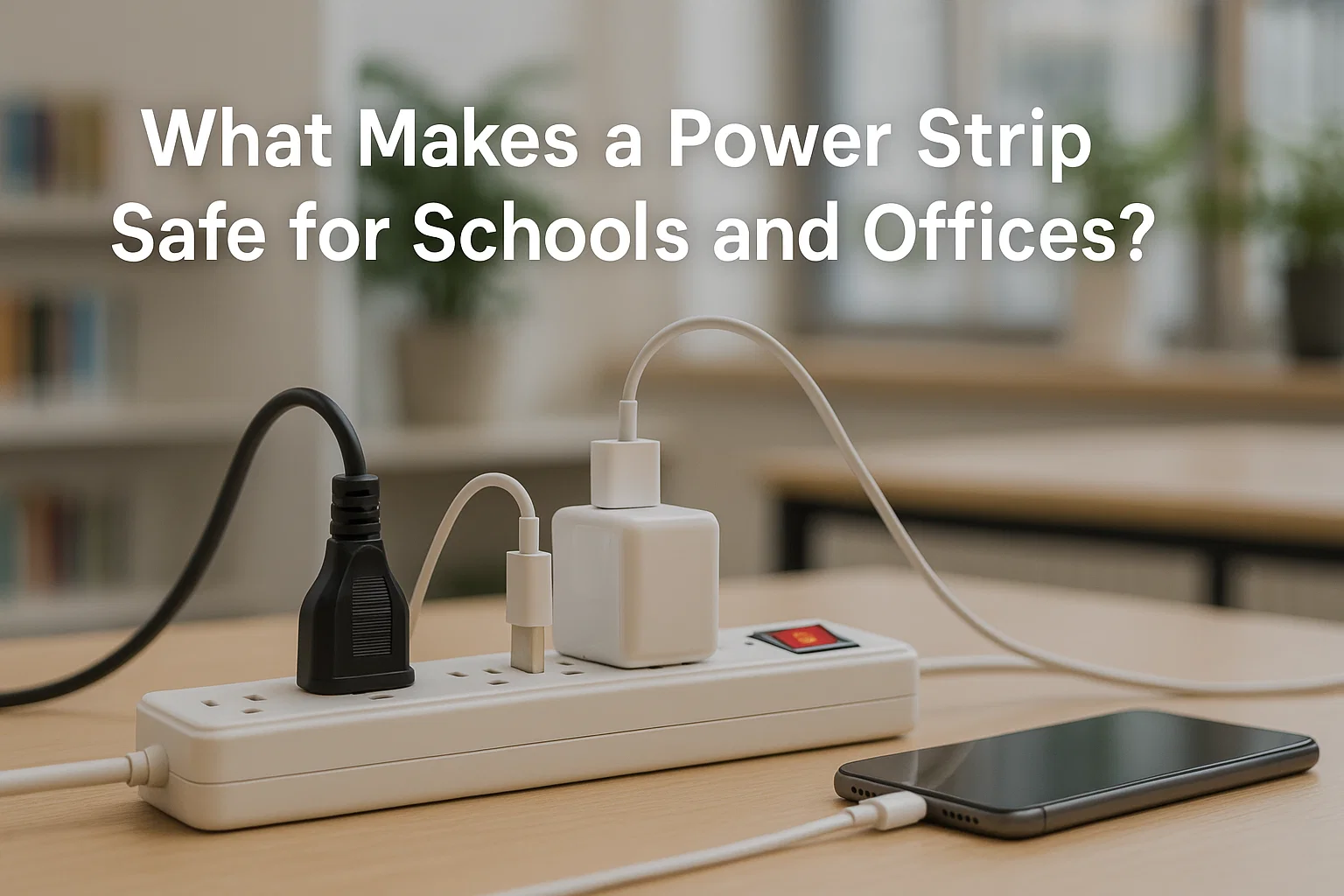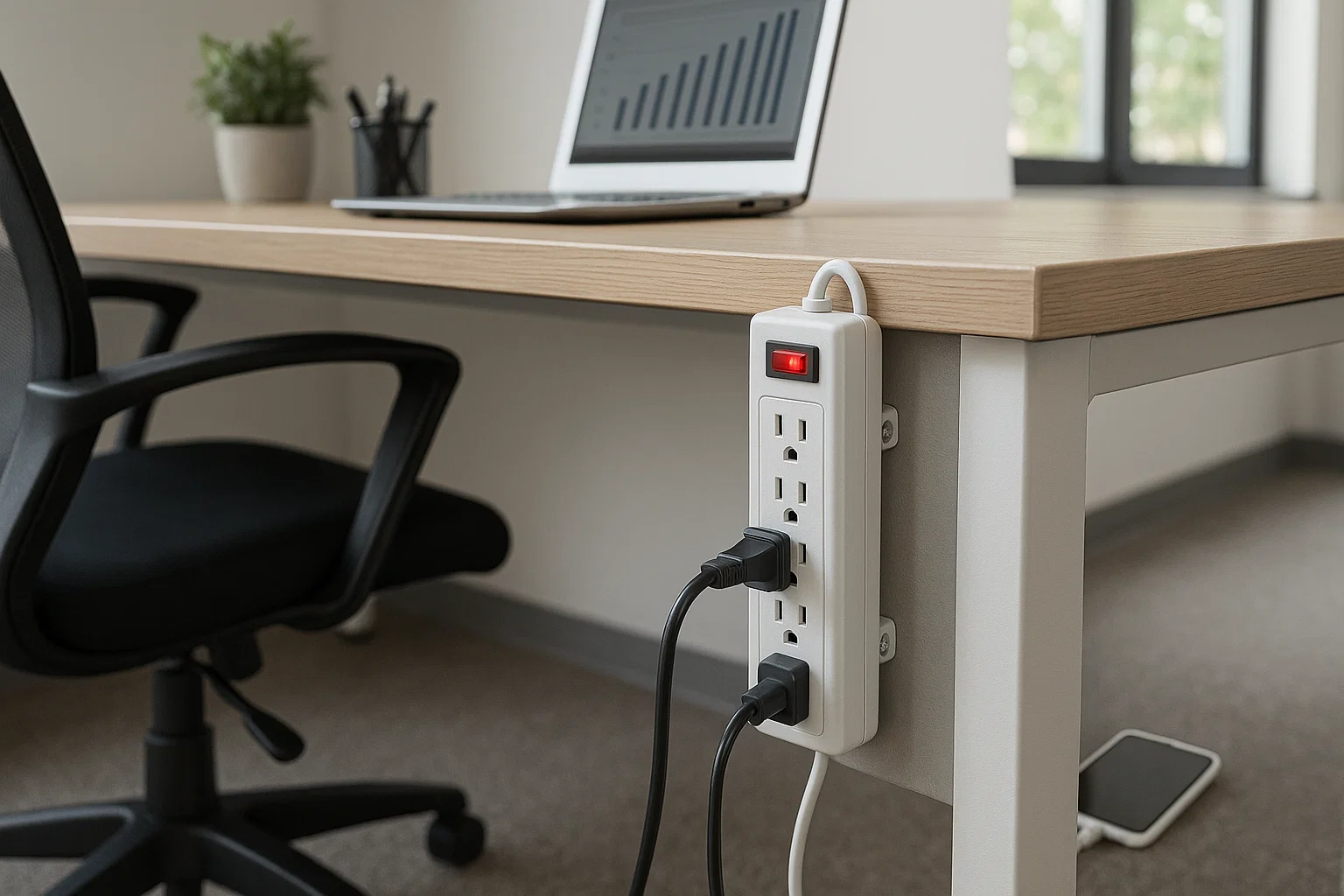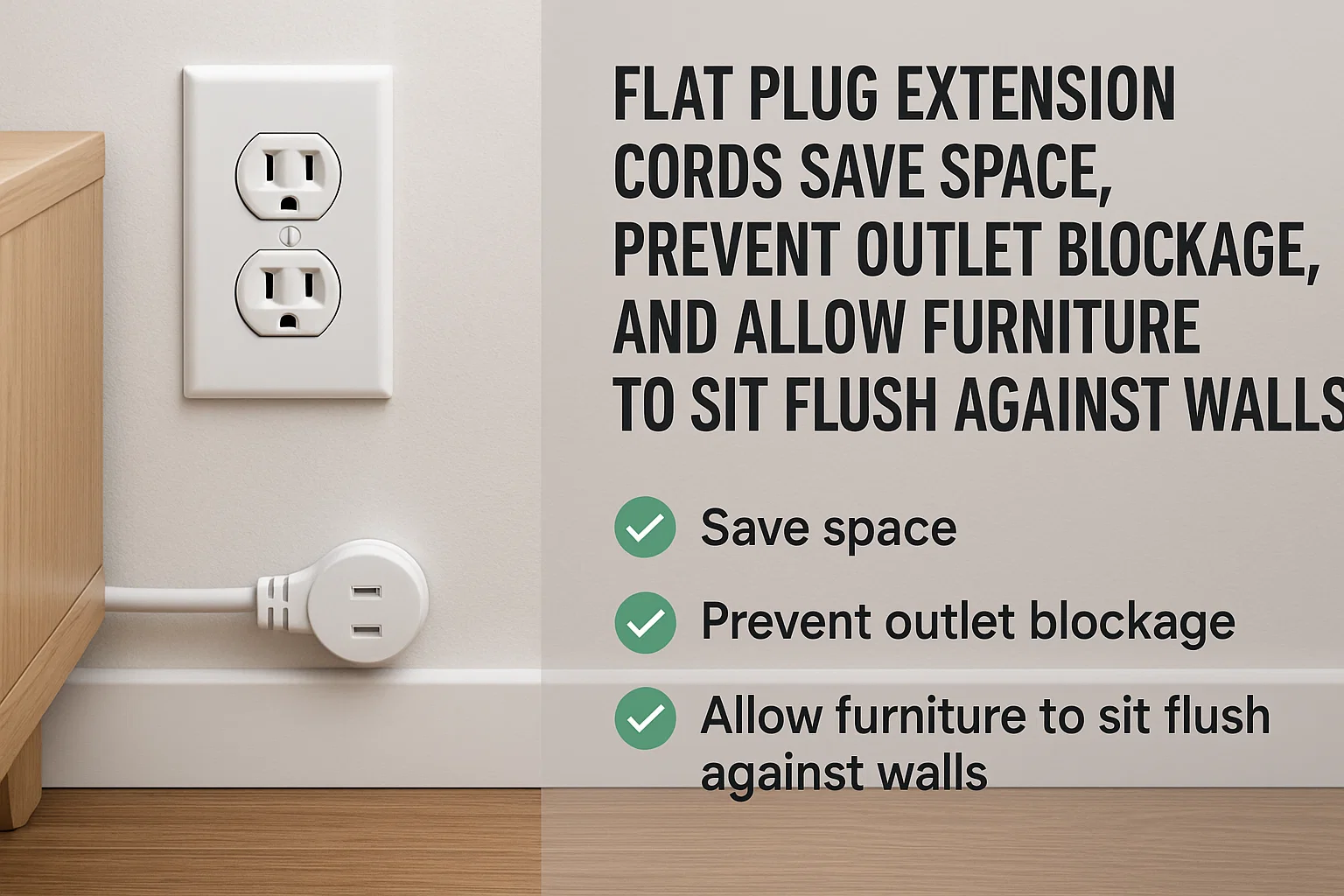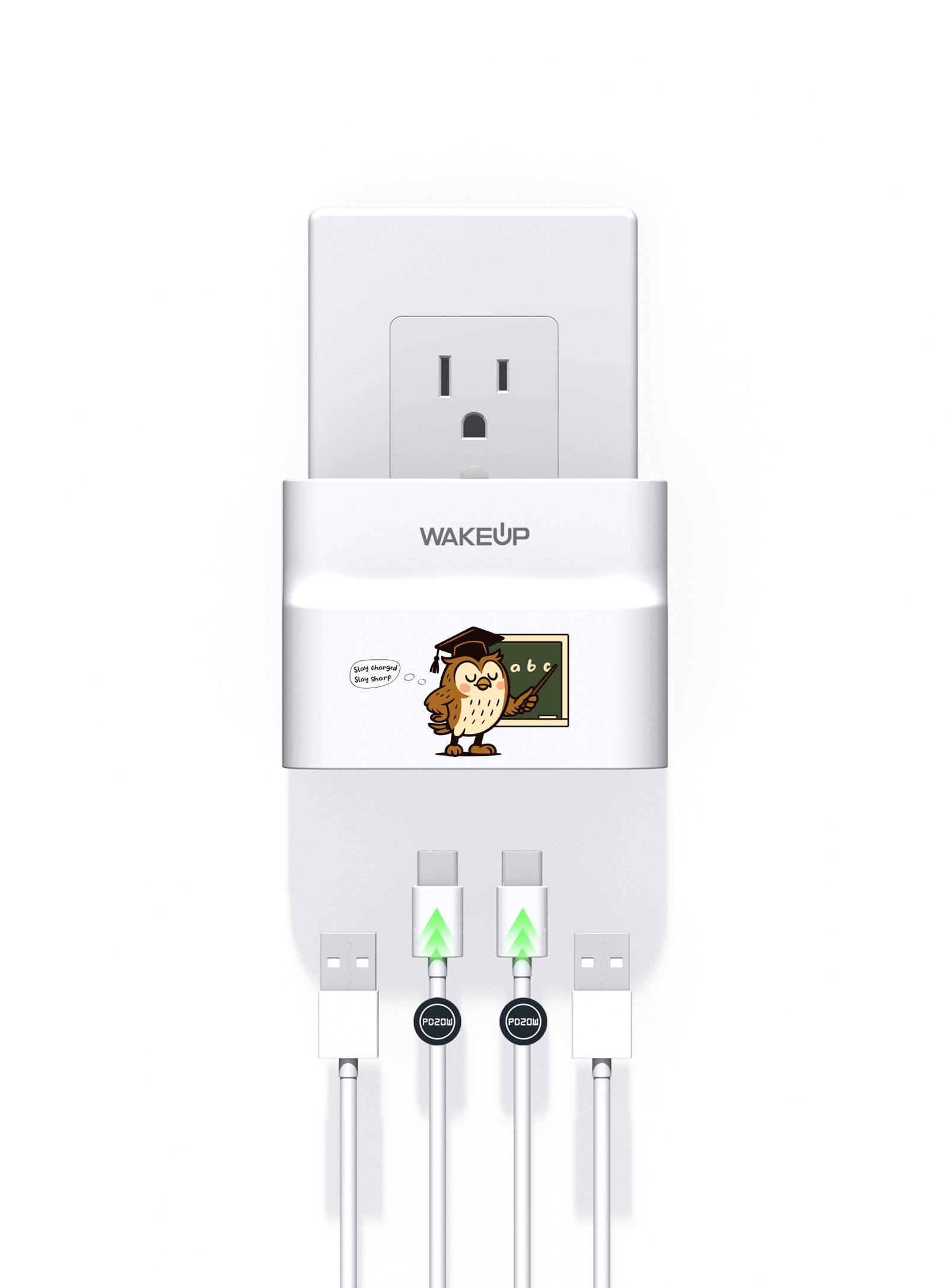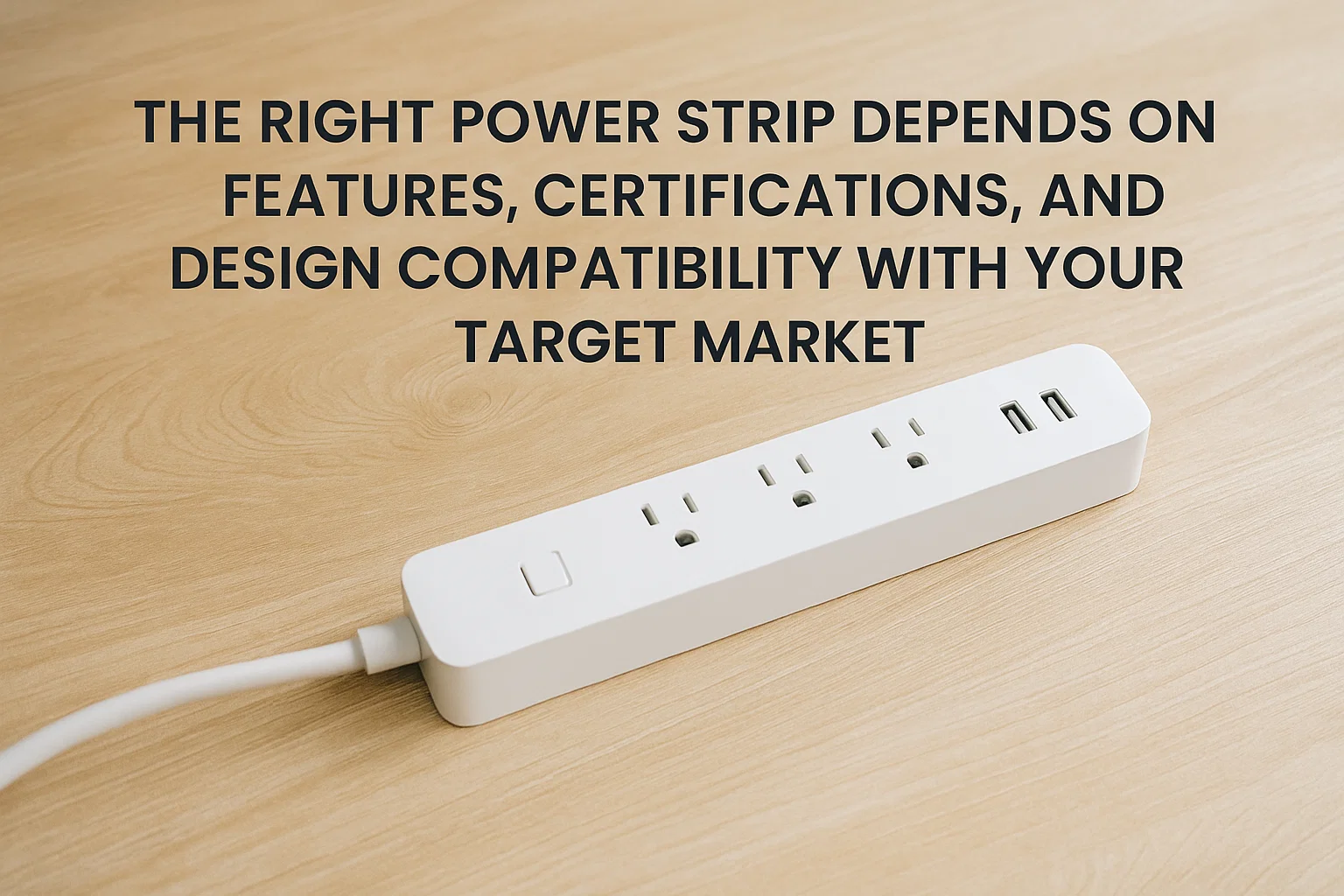
Overloading a power strip may seem harmless, but it can cause overheating, fires, or equipment damage.
An overloaded power strip can overheat, damage connected devices, trip breakers, or in worst cases, cause electrical fires.
Here’s what every professional buyer and safety-conscious business should know.
Why Do Power Strips Overload?
We often plug in too many devices without checking total power requirements.
Overloading occurs when the combined load of plugged-in devices exceeds the power strip’s rated capacity.

How Much Is Too Much?
Each power strip has a rated capacity, usually 10A or 15A in North America (equivalent to 1200W or 1800W at 120V). Exceeding this means the strip must handle more current than it’s designed for. That raises internal heat and risks melting wires or causing short circuits.
Sample Load Calculation
| Device | Power Usage (Watts) |
|---|---|
| Laser Printer | 600W |
| Desktop PC | 250W |
| Monitor | 60W |
| Coffee Maker | 1000W |
| Phone Charger | 20W |
| Total | 1930W |
In this example, a 15A (1800W max) strip is already overloaded.
What Happens When You Overload a Power Strip?
Overloading isn’t just a minor inconvenience—it can be dangerous.
An overloaded power strip can melt, spark, trip circuit breakers, or even start a fire.

Chain Reaction of an Overload
When the load surpasses rated capacity, the internal components heat up. If the housing is made from low-grade plastic or lacks internal safety features like thermal fuses or circuit breakers, this can cause plastic deformation or fire.
Common Outcomes of Overload
| Consequence | Description |
|---|---|
| Circuit Breaker Trips | Best-case scenario if connected circuit has protection |
| Plastic Melts | Happens when heat cannot dissipate properly |
| Sparks or Short Circuit | Arcs can form, especially with metal contact wear or poor internal design |
| Fire Hazard | In extreme cases, flammable material ignites |
I’ve had customers ask why a previous supplier’s strip discolored or even deformed under load. Often, it turns out they plugged high-wattage heaters or microwaves into a standard strip. That’s a recipe for disaster.
Can a Surge Protector Prevent Overload?
No, not directly. Surge protection and overload protection are two different things.
Surge protection defends against voltage spikes. It does not prevent overload from excessive current draw.

Overload vs Surge: What's the Difference?
Overload is caused by too much current flowing through the strip. Surge protection, on the other hand, protects against voltage spikes (e.g. lightning or sudden utility power surges). Unless your power strip has built-in circuit breakers, it won’t trip when overloaded.
Comparison Table
| Feature | Overload Protection | Surge Protection |
|---|---|---|
| Responds to High Current | ✅ | ❌ |
| Responds to Voltage Spike | ❌ | ✅ |
| Involves Tripping Switch | ✅ | ❌ |
| Protects Devices | ✅ | ✅ |
| Needs Reset Button | ✅ (for breakers) | ❌ (MOV-based) |
Buyers like Steve Karl should always confirm whether a power strip includes both protections. For retail, having a resettable breaker is a strong selling point—especially for higher-wattage applications.
How to Avoid Overloading a Power Strip?
Proper usage and education are the best ways to avoid dangerous overloads.
Always calculate your total load, and never plug heavy appliances into standard power strips.

Guidelines for Safe Use
I always recommend the following checklist to my clients—especially those distributing to households or offices:
- Check Max Wattage: Multiply volts × amps (e.g. 120V × 15A = 1800W)
- Avoid High-Draw Devices: Hair dryers, heaters, microwaves should go directly to wall outlets
- Use Built-In Breaker Models: These trip when overloaded
- Don’t Daisy-Chain: Never plug one strip into another
- Use Heavy-Duty Strips Where Needed: Choose industrial-grade for workshops or high-load setups
Safe Load vs Risk Load
| Strip Type | Rated Load | Unsafe Devices to Plug In |
|---|---|---|
| 10A / 1250W Strip | 1250W | Space heaters, portable A/C, microwave |
| 15A / 1800W Strip | 1800W | Heat guns, air compressors, deep fryers |
| Surge-Only Strip | Varies | Misused often due to missing breaker |
| With Breaker & Indicator | 1800W | Safest option for general home use |
At Wakeup, many of our models are ETL & cETL certified and include resettable breakers. We also offer custom warning labels and user guides to educate end users, which has helped reduce product liability concerns for our North American clients.
How Do I Know If My Power Strip Is Overloaded?
You can spot early signs—if you know what to look for.
Warning signs include warm plastic, discoloration, flickering lights, and occasional device shutdowns.
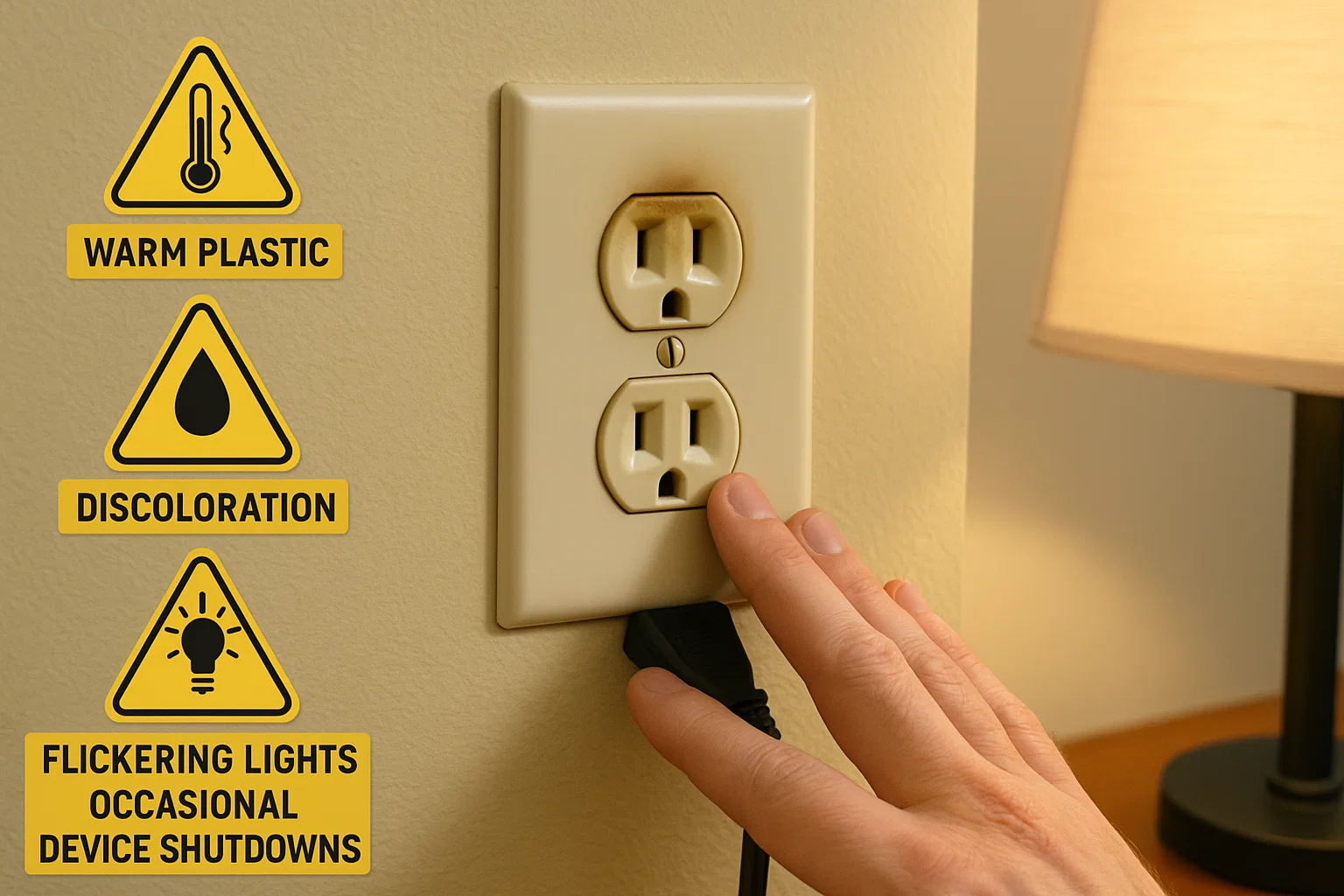
What to Watch For
If you or your customers notice the following, it’s time to unplug and inspect:
- The casing is hot to the touch
- You hear buzzing or crackling
- Lights connected to the strip flicker
- Devices suddenly restart or shut down
- Burnt smell or scorch marks on the outlet
These are signs of excessive load or damaged internal parts. In bulk resale environments, product education (via packaging, labels, or inserts) can help reduce misuse and build brand trust.
Overload Risk Level Checklist
| Symptom | Risk Level | Suggested Action |
|---|---|---|
| Warm to touch | Low | Unplug one or more devices |
| Audible humming | Medium | Replace with heavy-duty strip |
| Discoloration/smell | High | Discontinue use immediately |
| Devices failing | High | Test load, inspect strip |
Conclusion
Overloading a power strip can lead to overheating, tripped breakers, or fire—always check ratings and avoid high-draw devices.


